Because I updated the photos so thoroughly I decided to create another St Enodoc Photo Thread. For those interested in the comments of the original thread, see the link.
http://www.golfclubatlas.com/forum/index.php/topic,39199.0.htmlThere are blind shots, heroic carries, all manner and style of greens which are wonderfully contoured, flat holes, wildly undulating holes and at least one hugely controversial hole. This Cornwall gem on Daymer Bay is among a small handful of my favourite courses which I also believe to be among the best I have played. It is difficult to praise the quality of this course too much. An awful lot of great design is packed into this 6100 yard dynamo which surrounds St Enodoc Church, whose graveyard is the final resting place of Sir John Betjeman. It is ironic that the dunes which created such a memorable course were at the same time responsible for burying the chapel of ease. It wasn't until the mid 19th century that the chapel was uncovered and restoration begun. The namesake, St Enodoc (or St Gwinnodock), is said to have baptised converts at the nearby Jesus Well.
I have long wondered about the pedigree of St Enodoc. Founded in 1891, the course dating from 1898 featured what must have been some outstanding holes. The 13th and 14th of this course played along beach. I think the 13th green must have been very near today's 11th green.
We know that Braid (1907, 1937), Fowler (1923) and Simpson (1933) all had a hand in the design. Very little has been altered since Braid’s 1937 visit and the biggest change has probably been the 16th. The green was recently pushed back some 50 yards or so behind the old green, making this a stout 3-shotter. While I question the rationale for this move, I am a fan of the new hole. Is it better than the old, probably not, but the change is well done. Anyway, back to the issue of Braid, Fowler and Simpson...and it must be remembered that these are all only guesses on my part so please take them with a pinch of salt. It would seem that #s 1, 8, 10, 11 & 12 may not be Braid holes and that the rest...emphatically are in some form or another. I shall select the 10th first to clear away because it’s the easiest to deal with. This is the sole remaining hole from the original 1891 design and it happens to be THE controversial hole on the course. I am a great admirer of this hole and nothing I saw this trip has changed my mind. This is one of the great par 4s in golf even if earning a 4 is most unlikely for mere mortals.
Now we come to the question of #s 1 & 18. I couldn’t say for sure who designed these two holes. The 18th was reversed by Braid to its present configuration when the new house was built, but the green has heavy hints of Simpson involvement. Knowing Fowler greens, I would guess that Simpson also had something to do with the first as well because of the interior contours which Fowler didn’t tend to produce. In fact, and not to stray too far from the question, I would say Simpson may very well have altered many greens because they have rolls and flow which I haven’t seen often done by Braid or Fowler.
For the same reasons as above, my guess is Simpson had a hand in #s 8 and 12. Additionally, I don’t think Fowler would ring a par 3 with bunkers like the current 8th. #11 is a bit of a different matter. This green is very different from many on the course. It is flat and running away from the tee. With the oob hard left, the recovery from the right may cause a nervous moment or two. This hole strikes me as having Fowler written all over it.
I know of no course which sings to the golfer quite like St Enodoc does. Many golfer's will first experience the links from the other side of the Camel Estuary, in Padstow. The beach and dunes beckon the golfer to take the ferry...with spanners in tow.
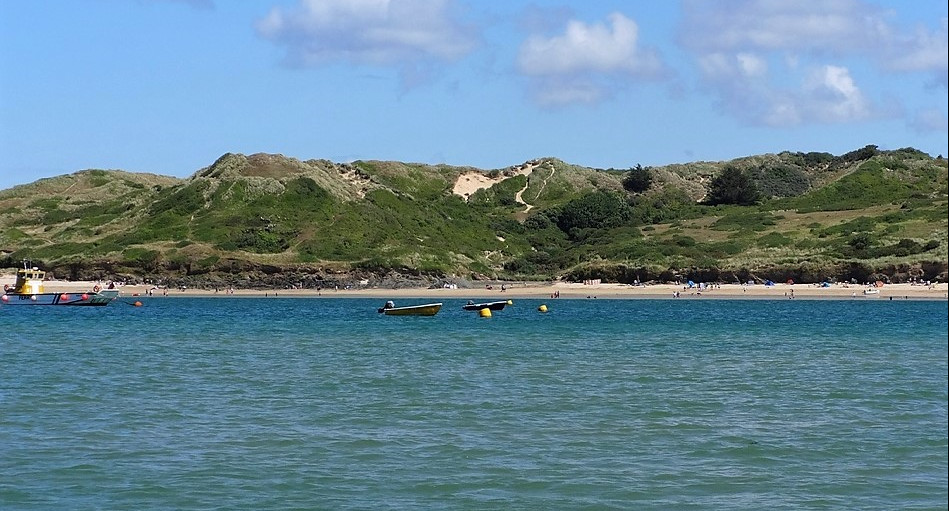
One can access the course over those dunes...
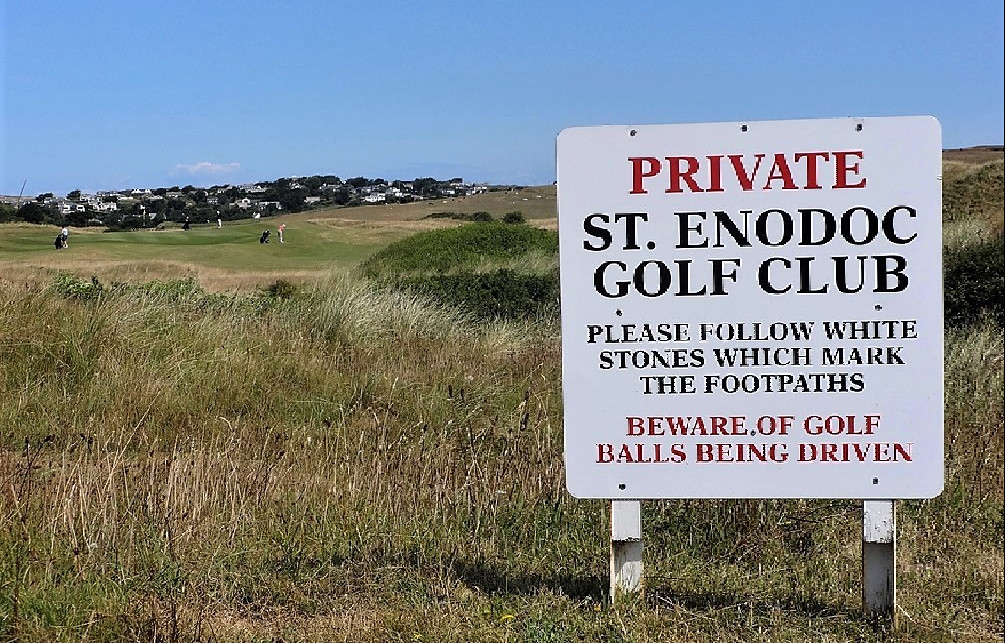
and sneak peak a lovely view or two...Stepper Point and Newlands Island.
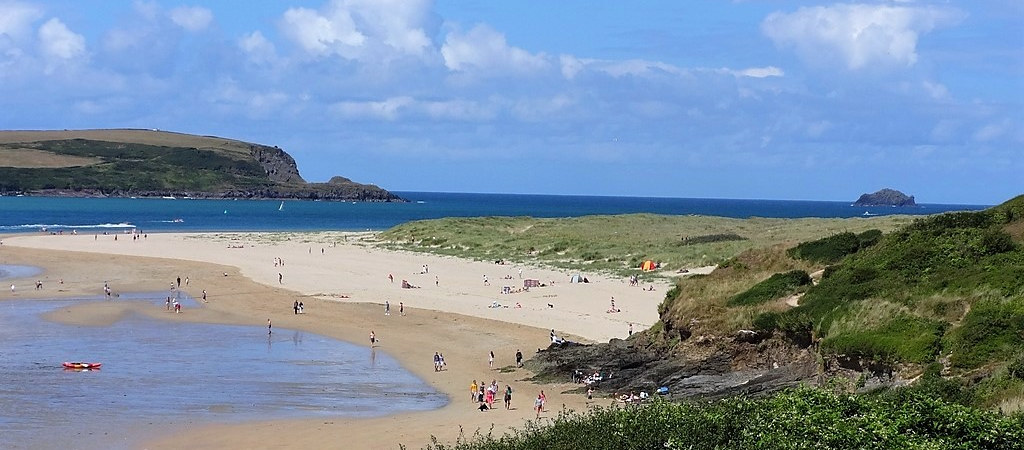
but, since so many great archies went through the trouble, why not oblige them by starting on the opener? The 1st gives the golfer an excellent idea of what to expect for the day; heaving ground punctuated with a tricky green. After hitting through the elephant's graveyard, the fairway blindly drops to the level of the pleateau green. On many days, this is a very reachable par 5.
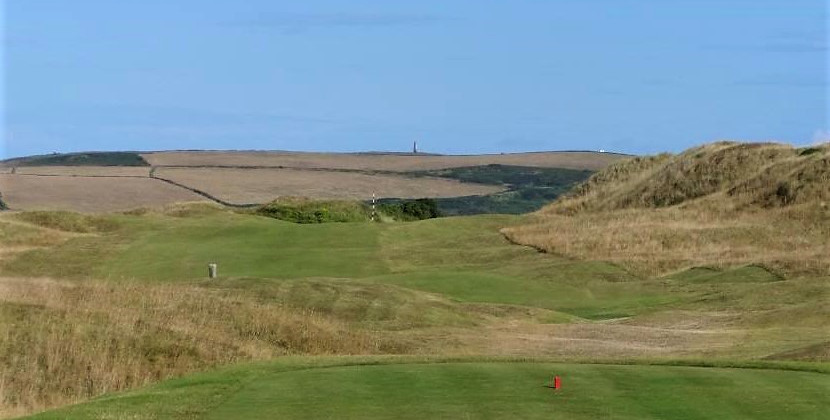
The false front is very evident from the fairway.

The second is a magnificent hole if a bit narrow when the rough is up. The play is left off the tee to gain the best angle on this legger right. An approach from the right must contend with a very deep bunker which is well hidden.
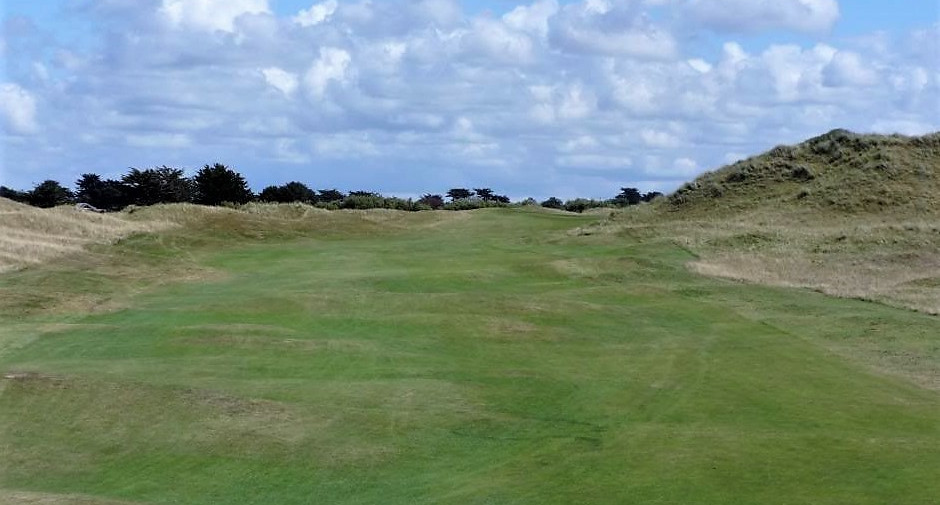
Below is the approach and a shot from behind the green.
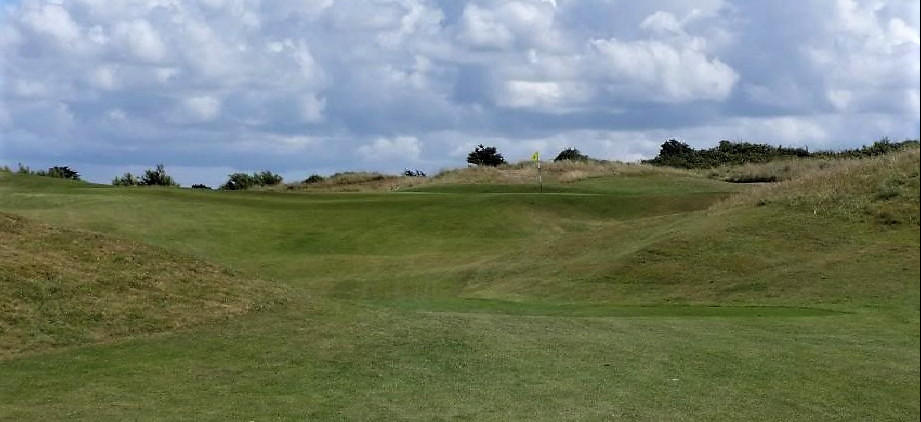

The great opening sequence continues on the 3rd. The confusion created on the tee has me convinced this is a great hole. I know its very easy to leak one down the hill right and oob or hit it a driver on the screws and end up in the road where it bisects the fairway at about 300 yards out...but so what? Such is the scarcity of inceptive design that when a hole of such originality presents itself it must be grabbed with both hands. One can imagine children sledding down the unruly hill and nary a one remaining between the blades. Wonderful as this is, it is the remarkable second shot which deserves all the attention it receives.
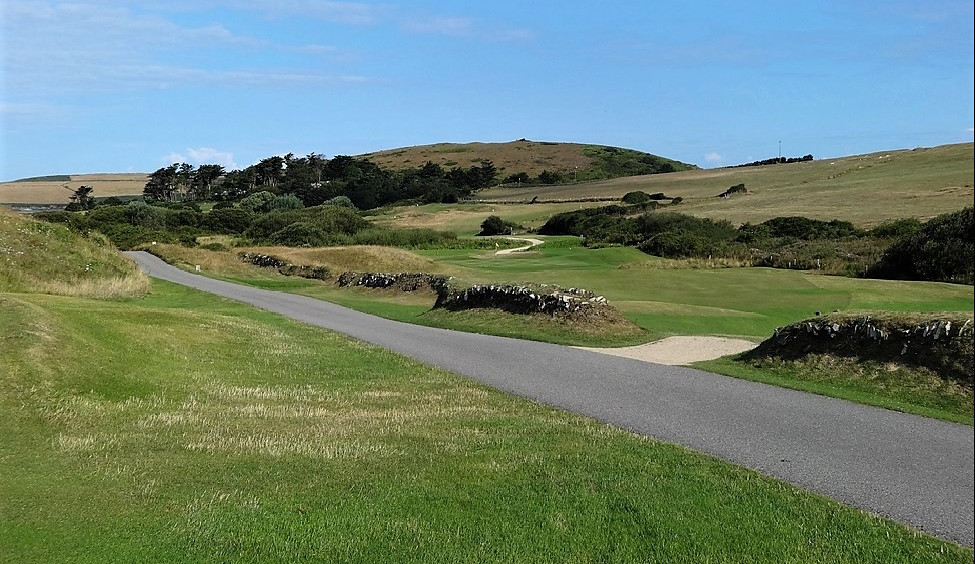
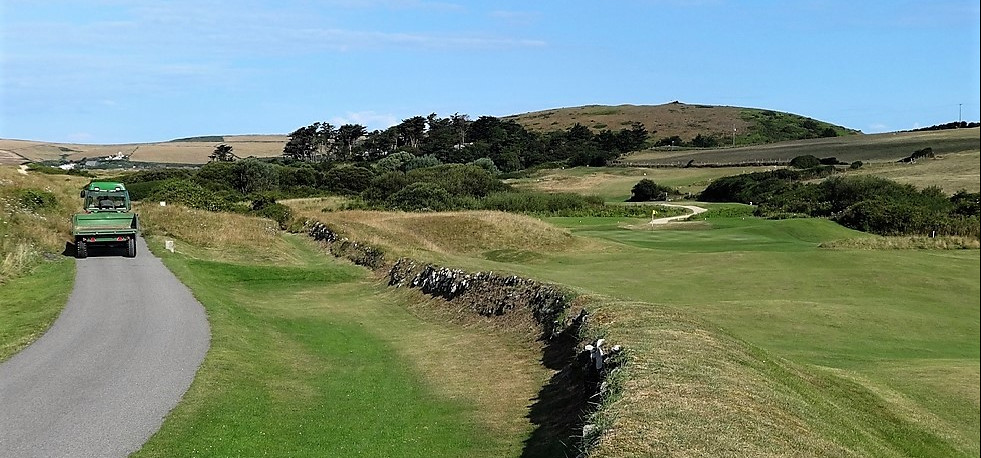
The next hole is quite possibly one of the very best short par 4s in existence and was wisely chosen by Sir Ernest Holderness for his eclectic eighteen holes. A head scratcher off the tee, however, unlike the 3rd, we can see all the options. For the brave, the ideal shot is to play right of the green on top of a narrow plateau which feeds to the putting surface. The risk involved is the boundary wall can easily be carried if the shot has any hint of a push.
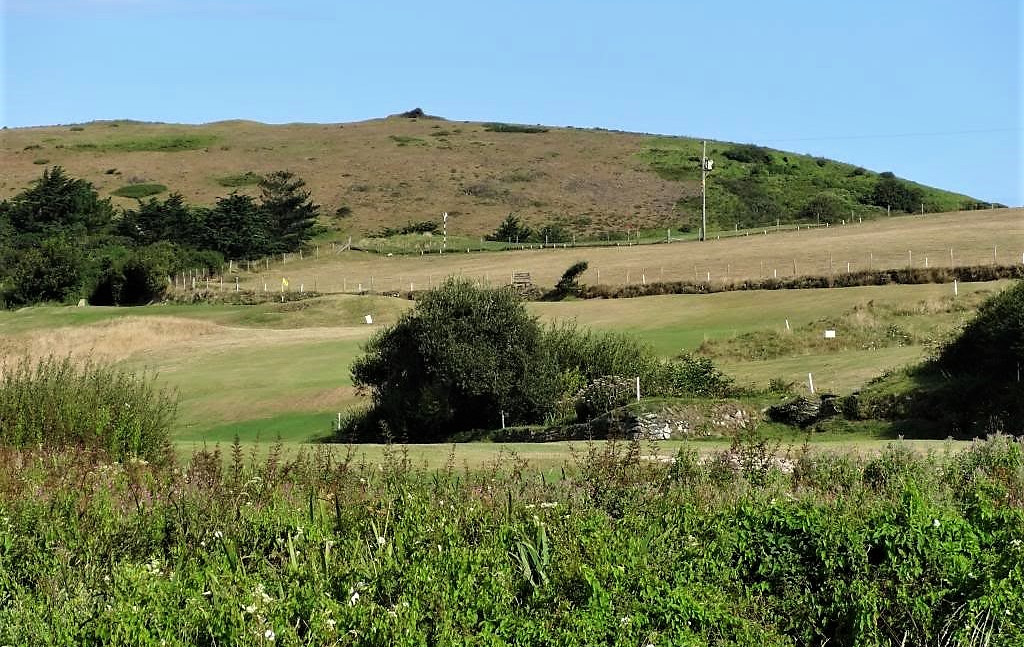
The aggressive play leaves this approach.
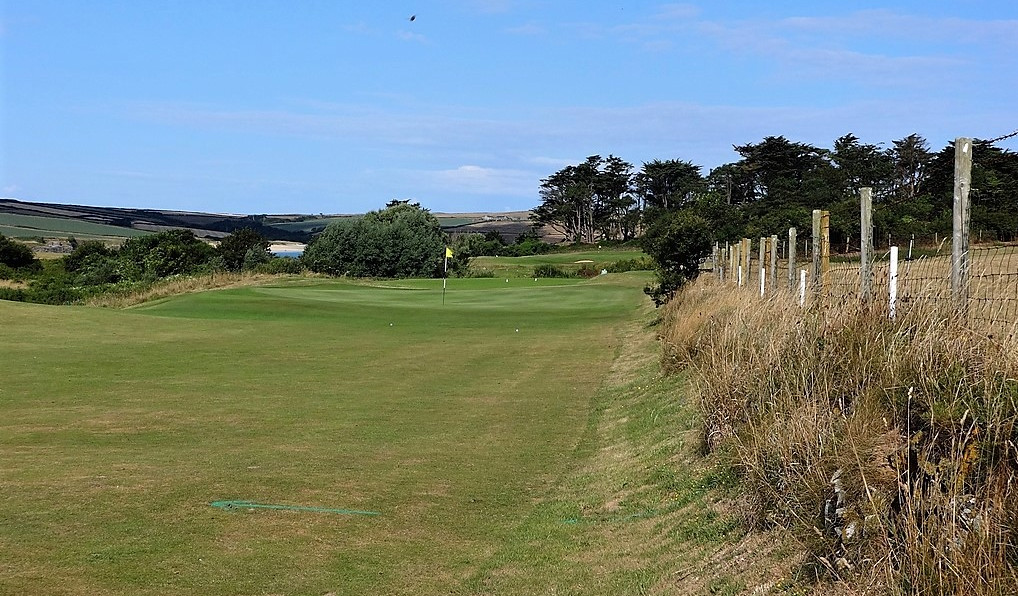
The simple tee shot leaves an approach similar to this, but of course one can lay-up well short this spot...it isn't recommended, but one can do it. Anybody trying to hit the long ball without challenging the OOB has these bunkers waiting. Only the 12th & 13th of North Berwick can rival St Enodoc's 3rd and 4th for back to back holes with such audacity, innovation and unorthodxy.
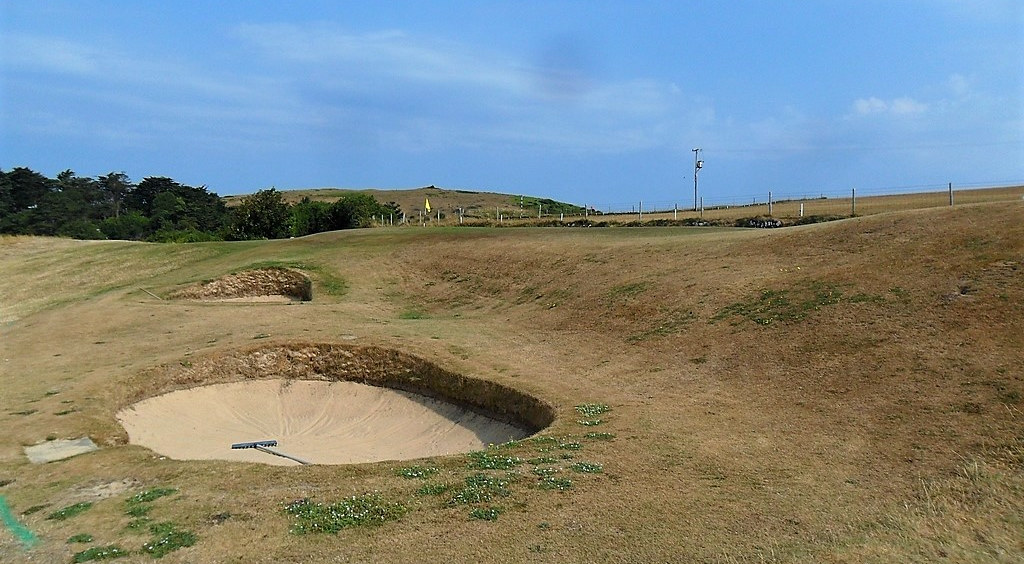
One thing rarely mentioned about St Enodoc is the variety of tees which concentrate on creating width. This is huge benefit for any club. The 5th is one such example. The angle from the white tees is brutishly elusive, but from the daily tee its merely a difficult one-shotter.
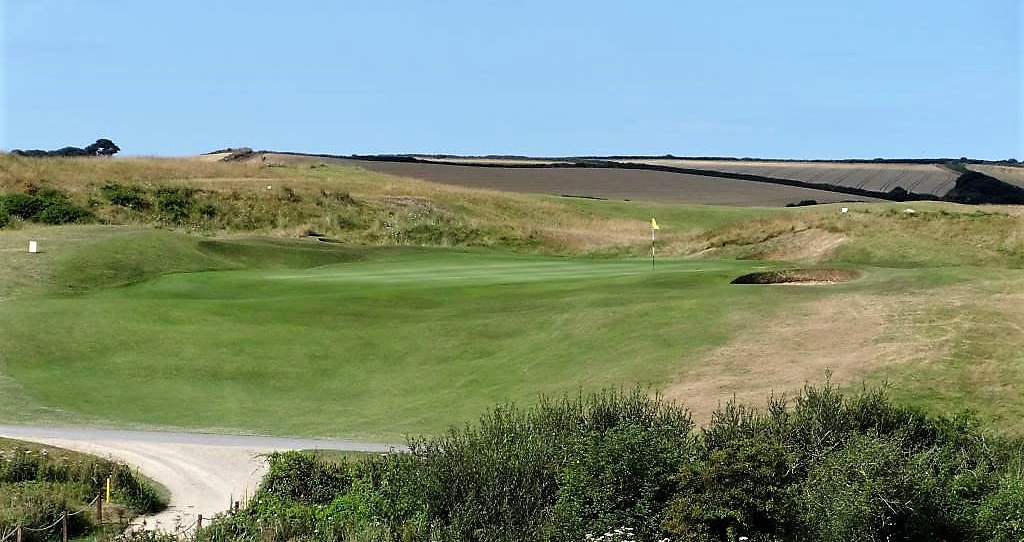
Having played 3 and 4, most golfers would be ecstactic at the riches delivered, but St Enodoc has a further two holes which are every bit as wonderful. Himalayas requires what it says on the tin, an heroic blind shot over a mountain of sand. Not terribly rare it is with a driver in our hands, but with an iron and hitting to a green shrouded in rough...well, you get the full mental image. Many times, a ball in play will win the day. If one dares take a peak of what lies ahead....he will see the troubles that await.

The two bunkers used to be connected and to much better effect. Hopefully this bunker can be restored some day.

A final look at one of the most celebrated holes in English golf.
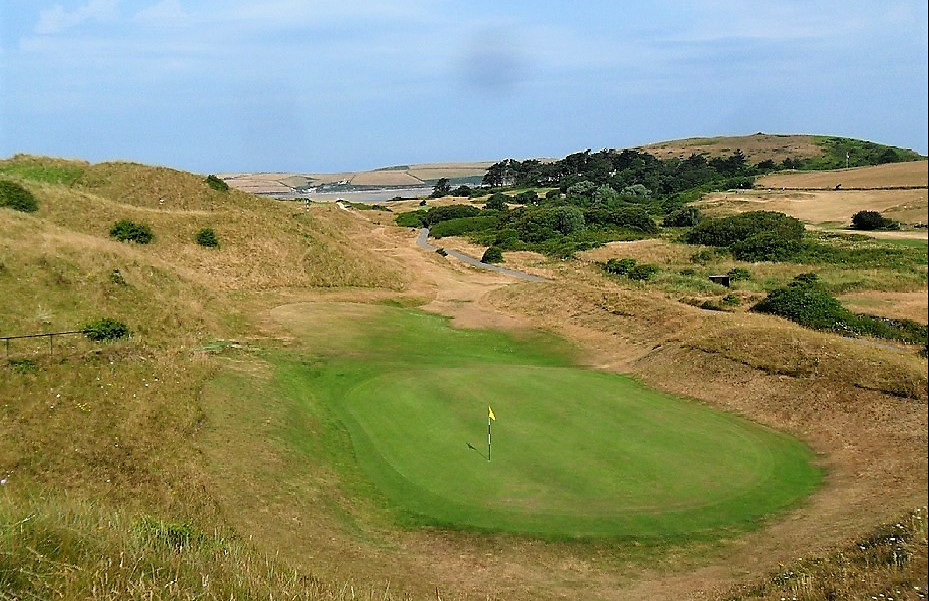
Most feel that with #6 behind us, that the epic start has concluded. That would be doing the seventh a great disservice. The drive takes us over a series of dunes which isn't an onerous carry, but a foozle will surely lead to a kiss on the card. Below is the approach from the left rough.
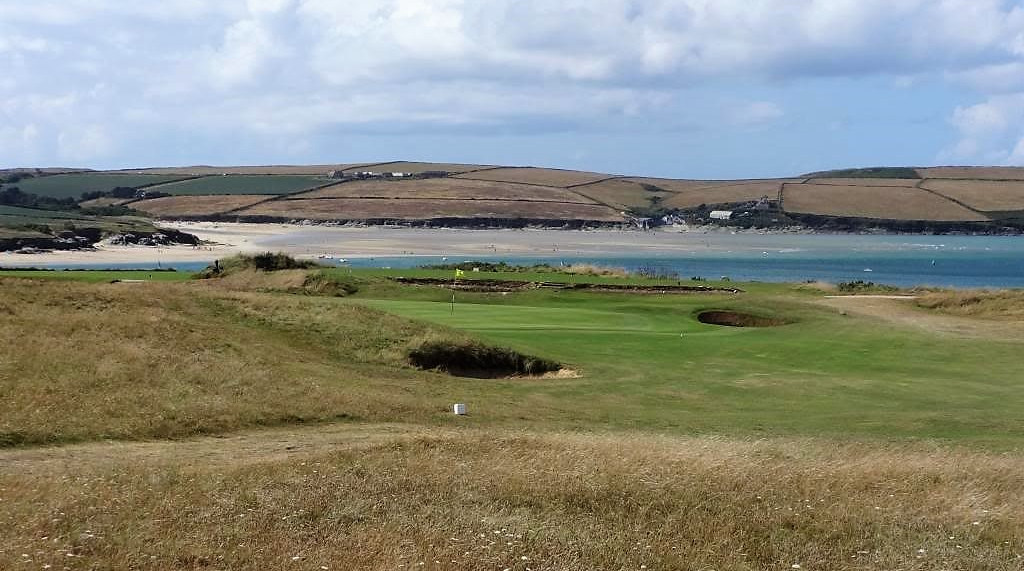
The 8th green with #6 and the dunes we play over for the seventh in the background. This old photo is a reminder of how little St Enodoc has changed since the late 30s.
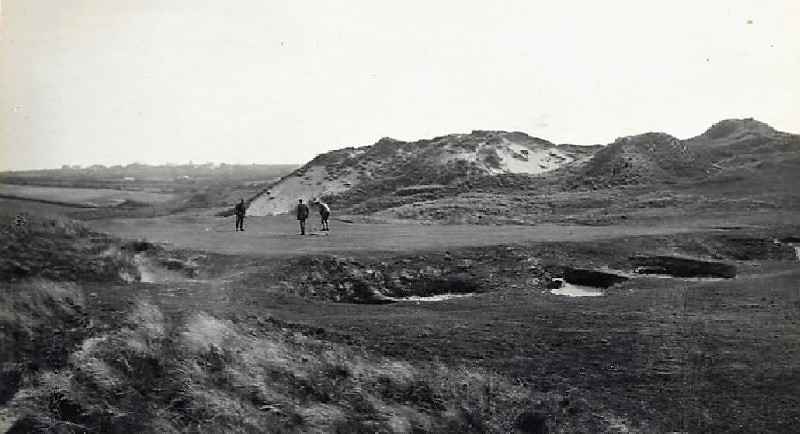
The ninth is a dead straight hole which takes the golfer to the base of Brea Hill. A man-made trench backed with a mound of spoil breaks the fairway if one is long off the tee. This hole is often over-looked, but it is an unsung beauty which deserves high praise.
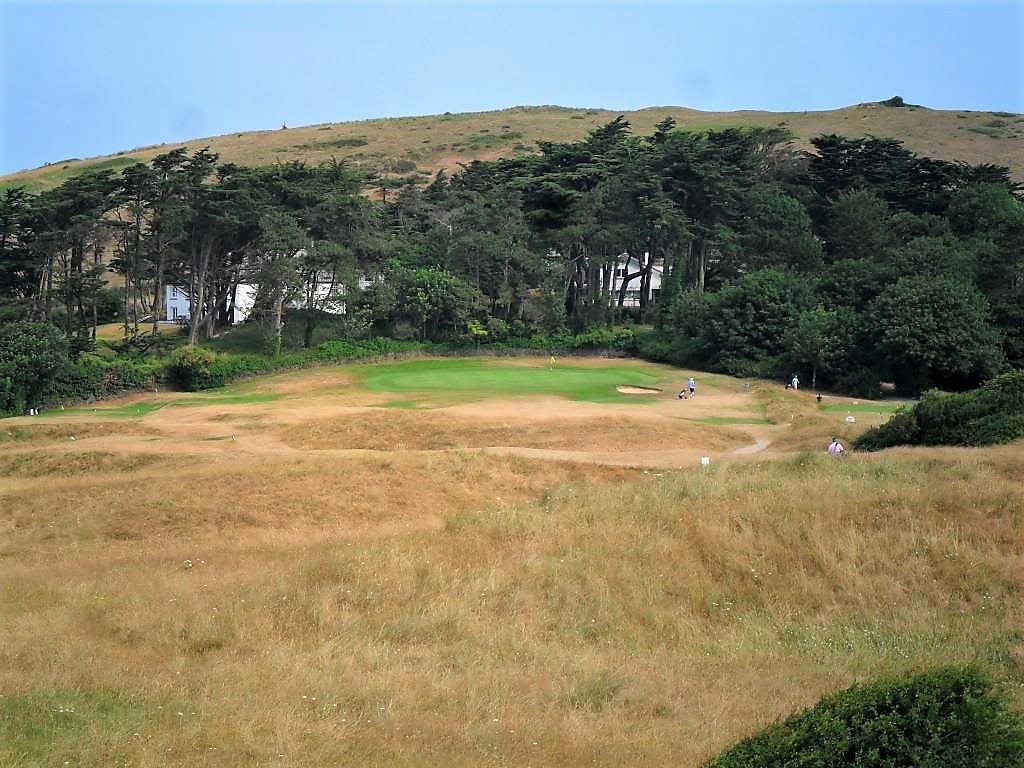
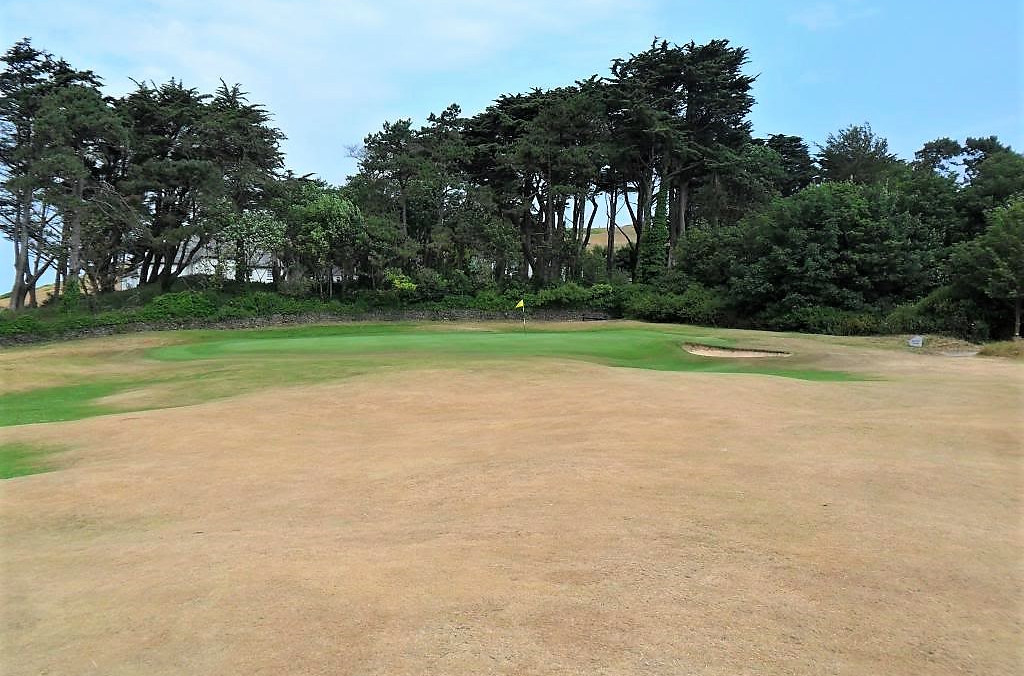
More to follow.
Ciao